Starting an online business is easier than ever. There are different ways to sell products or services online. These ways are called types of ecommerce. It’s good to know about them so you can choose the best one for your business.
In this blog, I will talk about 6 types of ecommerce. I will easily explain them and use examples to help you understand. Some types are for selling to regular customers, while others are for selling to businesses or the government.
This guide will help you understand what each type means and how it works. Knowing about these categories of ecommerce will help you make better decisions and grow your online business. If you want your business to do well, learning about ecommerce types is a good place to begin.
What Is Ecommerce?

Ecommerce means buying and selling things or services using the internet. People and businesses can do ecommerce on websites, phone apps, social media, online stores, or other online places.
Some common types of ecommerce are shopping online, paying electronically, online auctions, and internet banking. You can do ecommerce from anywhere as long as you have an internet connection. Sellers use ecommerce to increase their sales by using online tools and advertising.
Ecommerce, also known as ecommerce or electronic commerce, includes many activities such as displaying ads online and processing payment information over the internet.
6 Types of Ecommerce for Online Success with Examples
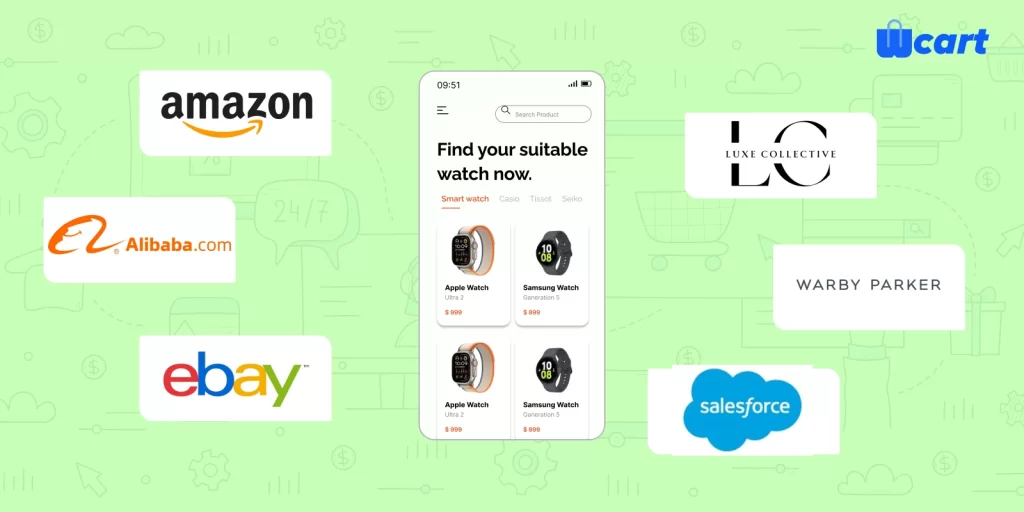
These are the six main types of ecommerce, showing different ways businesses and consumers buy, sell, and trade goods or services online across various platforms and markets.
1. Business-to-Consumer (B2C)
2. Business-to-Business (B2B)
3. Consumer-to-Consumer (C2C)
4. Consumer-to-Business (C2B)
5. Direct-to-Consumer (D2C)
6. Business-to-Government (B2G)
Let’s see the various types of ecommerce in today’s digital landscape.
1. Business to Consumer (B2C)
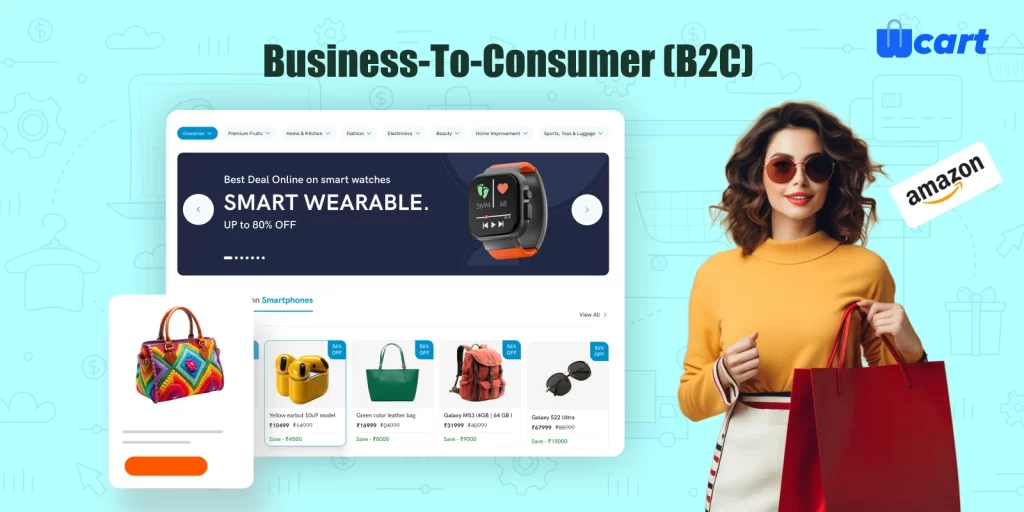
In a business-to-consumer (B2C) model, the customers are individual buyers who shop directly from an online store, where the business sells its products. Typically, these customers are the ones who will use the product themselves, or they might be buying it as a gift for someone else.
B2C ecommerce businesses often purchase their products from external suppliers and then resell them to customers. The main benefit of this approach is that you can buy products in larger quantities at a lower cost and then sell them for a profit. Additionally, you can gather useful customer data to help you reach more potential buyers.
The downside, however, is that the market is often highly competitive. Many other companies may be selling similar products in the same space, which can make it difficult to stand out. To succeed, you’ll need to clearly define what makes your business unique and have a deep understanding of your target customers.
Examples of B2C ecommerce
1. Amazon
Amazon is a global ecommerce platform where consumers can buy a wide range of products, from electronics to books, clothing, and more. It allows individuals to shop directly from the website and have items delivered to their doorsteps.
2. Nike
Nike sells sportswear, shoes, and equipment directly to consumers through its online store. Customers can browse the latest collections, customize products, and have their purchases shipped directly to them.
2. Business-to-Business (B2B)
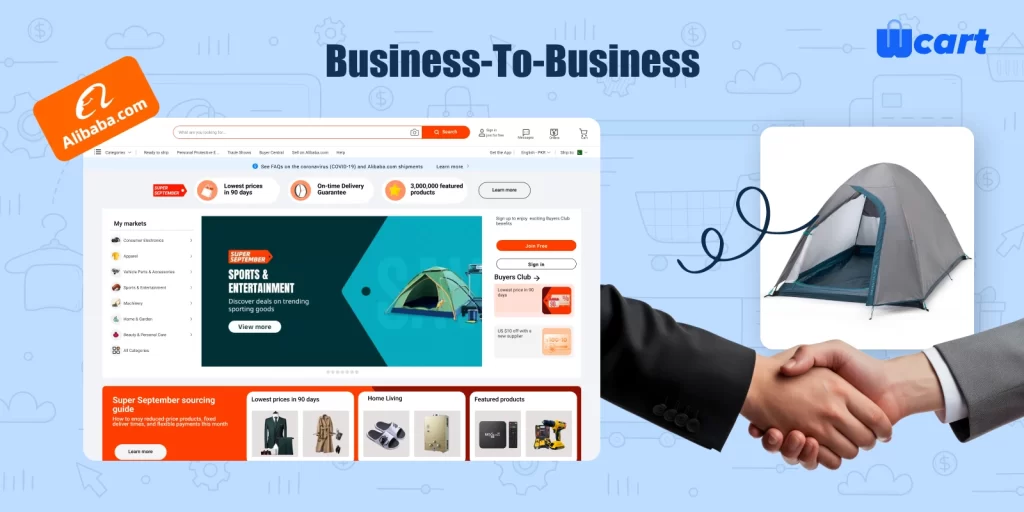
When a company sells products or services to another company online, it’s called B2B ecommerce.
B2B sites are set up for bulk orders, think 1,000 items instead of just a handful. They also tend to offer better customer service and more options for customizing orders.
One of the main benefits of B2B is that you don’t need as many customers to earn the same revenue as a B2C business. A single B2B customer might place several large orders, so you can spend less on marketing. While profit margins are usually lower (around 20% to 50% on wholesale), you make up for it by selling a lot more.
Examples of B2B ecommerce
1. Alibaba
Alibaba is a popular B2B platform where businesses can buy and sell products in bulk, usually for manufacturing or wholesale purposes. Companies use Alibaba to source materials, finished goods, and even custom-made products from suppliers worldwide.
2. Grainger
Grainger is a B2B ecommerce company that supplies businesses with industrial equipment, tools, and safety products. Companies order in large quantities to meet their operational needs.
3. Consumer-to-Consumer (C2C)
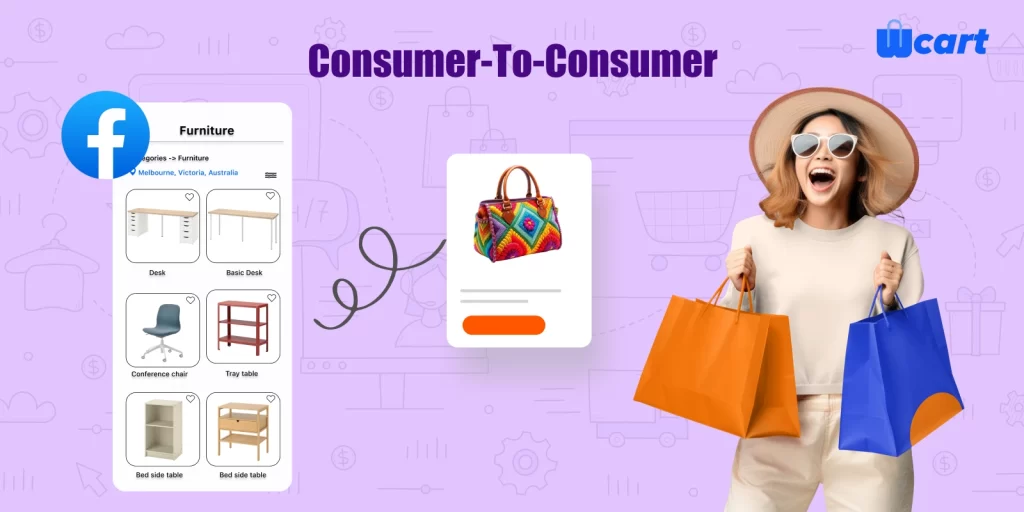
Consumer-to-consumer (C2C) businesses are online platforms that allow individuals to sell products directly to other consumers. eBay is the most famous example, where anyone can sell used items without needing to be a business.
For years, C2C businesses were limited because major sites like eBay, Etsy, and free platforms such as Craigslist and Facebook Marketplace dominated the market. Recently, new companies have appeared that offer more personalized C2C experiences.
These businesses create unique platforms where people can buy and sell goods in a way that better suits their needs.
Examples of C2C ecommerce
1. eBay
eBay is a well-known C2C platform where individuals can auction or sell used items directly to other consumers. Anyone can list their products for sale without being a registered business.
2. Facebook Marketplace
Facebook Marketplace allows users to buy and sell items within their local communities. It’s a simple way for individuals to sell used goods like furniture, electronics, and clothing to other people nearby.
4. Consumer-to-Business (C2B)

Consumer-to-business (C2B) ecommerce is when individuals sell products or services directly to businesses. Unlike traditional ecommerce, where companies sell to customers, in C2B, people offer items or skills to businesses. For example, some brands buy clothes or products directly from individuals instead of suppliers.
C2B also includes services like freelance writing, photography, or graphic design, where people work with companies to provide what they need. This type of ecommerce is growing fast because it allows people to earn money online by selling their products or talents to businesses.
Examples of C2B ecommerce
1. LuxeCollective
LuxeCollective is a fashion brand that buys designer clothes directly from individuals. Instead of sourcing products from suppliers, they purchase items from consumers to resell.
2. Stock Photography Websites
Websites like Shutterstock or Adobe Stock allow photographers and artists to sell their photos and designs to businesses that need images for marketing, advertising, or websites. This lets creators earn money by selling their work directly to companies.
5. Direct-to-Consumer (D2C)

Direct-to-Consumer (D2C) means a company sells products straight to customers without using stores or other sellers. This lets them set their prices and control how they promote their products. Without middlemen, they save money and can often give you better prices.
They also get to know their customers better, so they can make things that people want. Brands like Warby Parker and Casper have done well by selling straight to shoppers online and making the whole process simple and easy.
Examples of D2C ecommerce
1. Warby Parker
Warby Parker sells eyeglasses directly to customers through their website, cutting out traditional stores. This helps them offer stylish glasses at lower prices.
2. Casper
Casper sells mattresses and sleep products online straight to buyers. By skipping middlemen, they provide good-quality mattresses at better prices.
6. Business-to-Government (B2G)
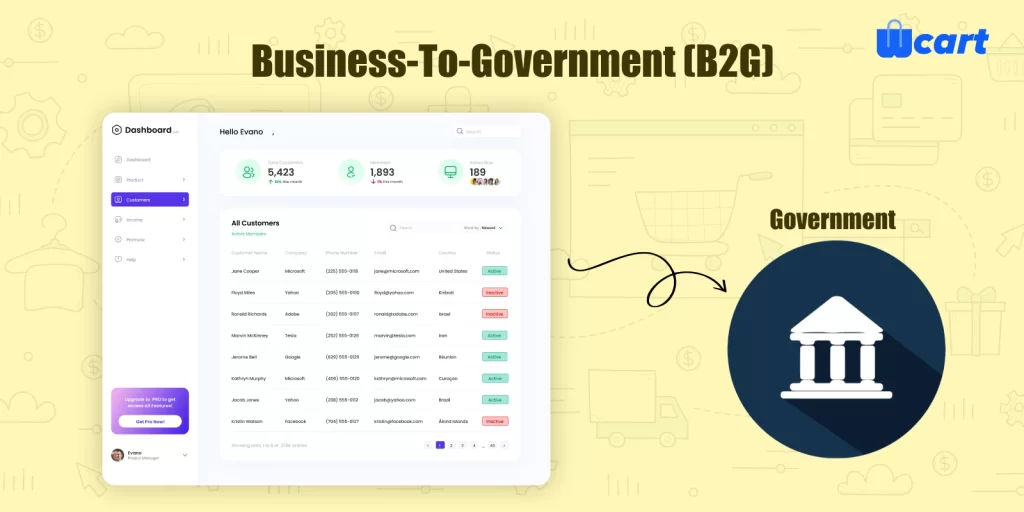
Business-to-Government (B2G) is a type of ecommerce where companies sell products or services directly to government agencies. For example, a software company that provides accounting solutions to the IRS is using the B2A model. This is also called business-to-government (B2G) ecommerce.
Selling to the government can take time. The sales process is usually longer because of strict rules, budgets, and approval steps. It often means spending more time building trust and relationships with decision-makers.
The good part? You don’t need a lot of customers. Just a few government contracts can be enough to run a successful business.
Examples of B2G ecommerce
1. Salesforce for Government
Salesforce offers cloud-based CRM and data management tools to government agencies, helping them manage information and improve public services.
2. Microsoft Azure Government
Microsoft provides secure cloud services through Azure specifically for U.S. government departments, supporting everything from data storage to advanced security solutions.
How to Choose an Ecommerce Business Model

When starting an ecommerce business, one of the first and most crucial steps is selecting the right business model. The ecommerce landscape is vast, and the model you choose will directly influence your business operations, marketing strategies, and long-term success.
Let’s break down the factors to consider:
1. Understand Your Target Audience
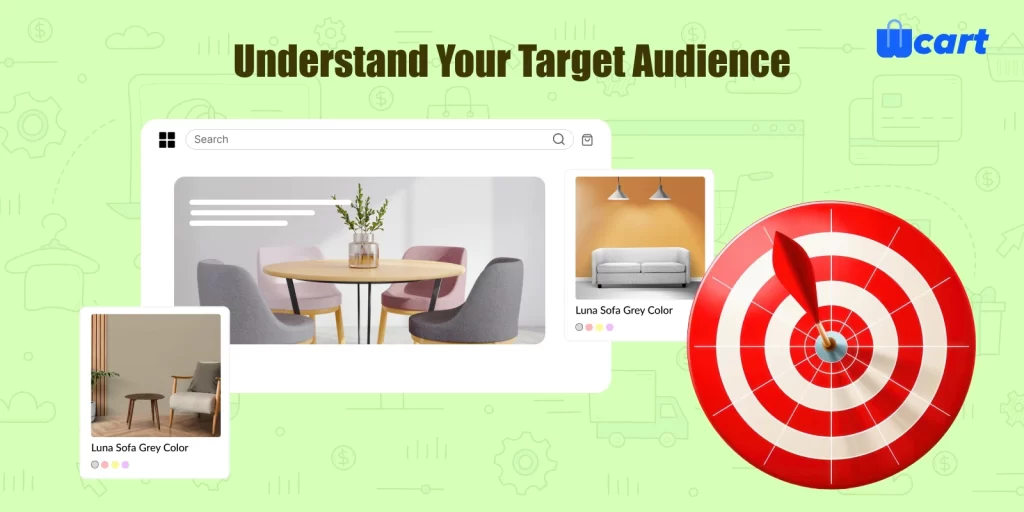
Before you start your online business, you need to know who your customers are. Are you focusing on a small group of people who need something specific, or a large group with different wants and needs? Understanding these factors will help you decide which of the different types of ecommerce is the best fit for your business.
For example, if your customers are young and tech-savvy, and they want things fast and easy, you might consider dropshipping or selling on websites like Amazon. But if you’re selling something unique or high-quality, it’s better to sell directly to them. This way, you have more control over your brand and can offer a better shopping experience.
Also, think about where your customers shop. Do they use their phones, computers, or social media? This helps you know where to sell your products.
When you understand what your customers want and how they shop, choosing the right model from the different types of ecommerce becomes much easier.
2. Evaluate What You’re Selling
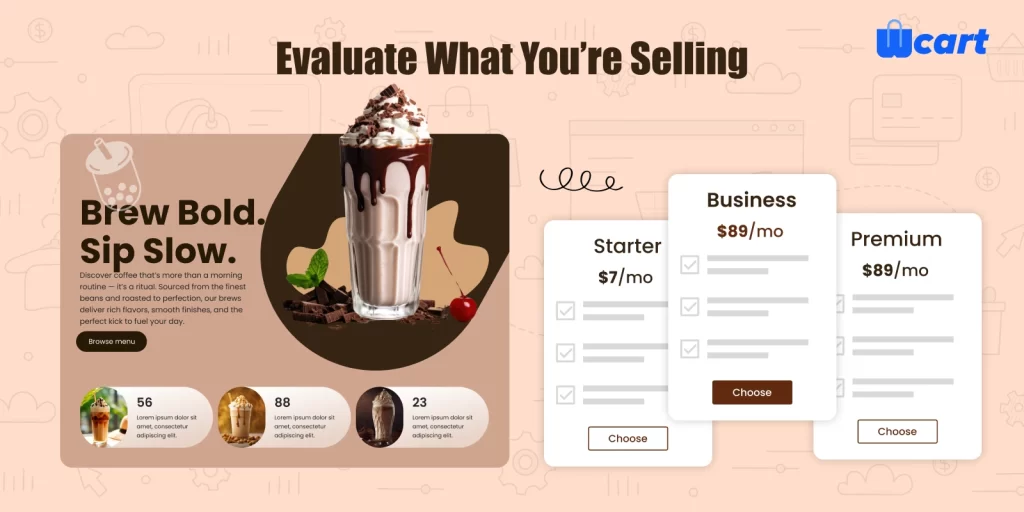
What you’re selling plays a big role in choosing the right ecommerce setup. Different products need different selling methods. For example, if you’re selling physical items that need storage, packing, and shipping, a traditional online store where you manage your stock might work best.
But if you don’t want to handle shipping or keep products in stock, dropshipping is a good option, Your supplier ships items directly to your customers. For digital products like eBooks or software, it’s easier to sell through one-time downloads or subscriptions since there’s nothing physical to ship. Some products, like coffee or skincare, are perfect for monthly subscriptions.
In short, understanding your product helps you choose whether you’ll handle orders yourself, use a supplier, or go fully digital.
3. Assess Your Resources and Capabilities
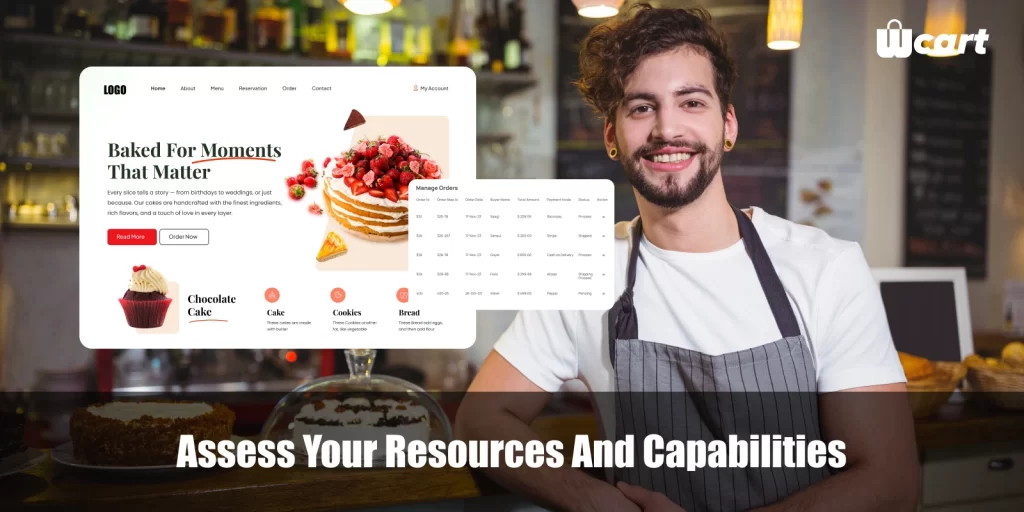
The money, time, and skills you have will help you decide the best way to run your online business. If you have enough money to buy products, store them, and take care of shipping, a traditional online store might be a good choice. But it also means more work for you, like handling orders and customer support.
If you don’t have much money or time, dropshipping or affiliate marketing could be easier. These options let you sell without keeping any products yourself. You can also sell on websites like Amazon or Etsy, which take care of many things for you.
Think about what you’re good at. If you don’t know much about ecommerce or websites, it’s okay to start small or use tools that make things easier. In the end, picking a method that matches what you have will help your business run smoothly and grow over time.
Conclusion
Starting an online business is easier than ever, but choosing the right path can be confusing with all the options available. That’s why understanding the different types of ecommerce is so important. It helps you pick the best way to sell your products or services online.
In this blog, we’ve covered 6 main categories of ecommerce, each with its benefits and challenges. Some models, like B2C, are great for selling directly to customers, while others, like B2B, focus on business-to-business transactions. By knowing these ecommerce types, you can make smarter decisions about how to set up your online store and grow your business.
No matter your niche, understanding the right ecommerce model for your business is the first step to online success.
Frequently Asked Questions:
1. What is the difference between B2B and B2C ecommerce?
B2B stands for “business to business,” and B2C stands for “business to consumer.” In B2B ecommerce, businesses sell products or services to other businesses through online platforms. In B2C ecommerce, businesses sell directly to individual customers, like you and me.
2. What is the meaning of C2C in ecommerce types?
C2C ecommerce stands for “consumer to consumer.” It’s when regular people buy and sell things to each other online, usually through websites or apps like eBay or Facebook Marketplace. These platforms help with listing products, processing payments, and making the transaction easier.
3. What are the advantages of D2C ecommerce?
D2C (Direct-to-Consumer) ecommerce has many benefits, like higher profits, stronger customer relationships, direct access to customer info, and more control over your brand.
4. What are the three main types of commerce?
1. B2B (Business to Business)
2. B2C (Business to Consumer)
3. C2C (Consumer to Consumer)
5. What are the categories of e-services?
1. Online Retail
2. Online Banking
3. Education Services
4. Cloud Services
5. Entertainment
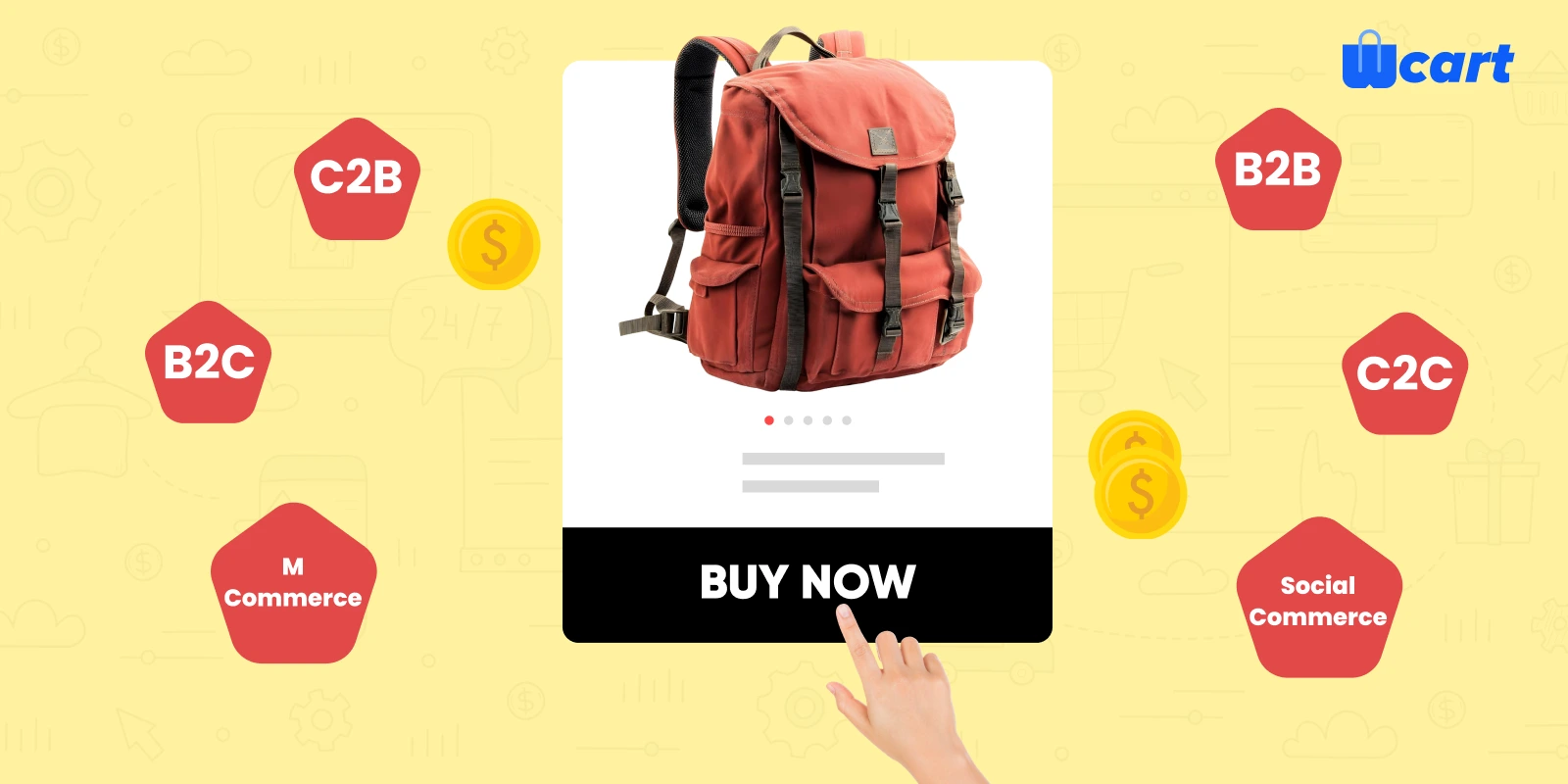



Leave a Reply